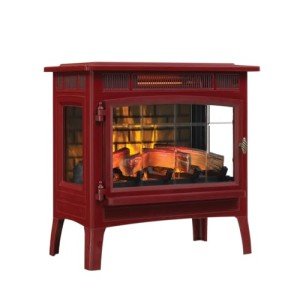5 Clarifications On Freestanding Stoves For Sale
Freestanding Stoves for Sale: The Ultimate Guide
Freestanding stoves, likewise called standalone stoves, are an increasingly popular option for house owners seeking to enhance the heating efficiency and aesthetic appeal of their home. They come in a myriad of designs, sizes, and fuel alternatives, providing versatility to meet the varied requirements of consumers. This short article checks out numerous aspects of freestanding stoves, including their advantages, types, and functions, along with a guide to purchasing the right range.
What is a Freestanding Stove?
A freestanding range is a heating appliance that is not developed into a wall or cabinets. Rather, it stands individually in a room and can be positioned in numerous areas, making it a flexible heating option. These stoves can make use of various fuels, such as wood, gas, or pellets, and are designed to provide heat while enhancing the ambiance of an area.
Benefits of Freestanding Stoves
Freestanding stoves are favored for several factors:
- Heating Efficiency: Freestanding stoves can generate considerable heat output while being fuel-efficient.
- Visual Appeal: With different styles varying from traditional to contemporary, they can be a focal point in any space.
- Installation Flexibility: They can be placed in diverse locations, enabling for easy integration into existing home designs.
- Cost-Effective: Many freestanding stoves are more economical to install compared to built-in systems.
- Heat Distribution: They can efficiently distribute heat through the convection procedure, heating up the surrounding location.
Kinds Of Freestanding Stoves
Freestanding stoves been available in different types based on their fuel source, including:
Type
Description
Wood Stoves
Use traditional wood logs for fuel, providing a rustic appeal and an unique atmosphere.
Gas Stoves
Run utilizing gas or gas, providing practical and manageable heating.
Pellet Stoves
Utilize compressed wood pellets as fuel, known for their efficiency and eco-friendliness.
Electric Stoves
Usage electrical energy as a power source, offered in different styles, often including modern styles.
Key Features to Consider
When looking for a freestanding stove, a number of functions must be taken into account:
- Heat Output (BTUs): Consider the size of the location you desire to heat and pick a stove with an appropriate BTU ranking.
- Size and Design: Ensure the stove fits the space and complements the room's decoration.
- Fuel Type: Decide on the most practical and affordable fuel type for your family.
- Efficiency Ratings: Look for the range's efficiency scores (like EPA accreditation for wood stoves) to ensure you're making an environment-friendly option.
- Safety Features: Consider designs with security features such as auto shut-off, heat resistant glass, or low-clearance options.
Acquiring a Freestanding Stove
When considering purchasing a freestanding stove, it is necessary to evaluate a number of crucial factors to guarantee you invest sensibly:
1. Budget
Setting a clear budget is crucial when purchasing a freestanding range. Prices can differ commonly based on the type, brand name, and functions:
- Basic Models: ₤ 800 – ₤ 1,500
- Mid-Range Models: ₤ 1,500 – ₤ 3,000
- High-End Models: ₤ 3,000 – ₤ 6,000+
2. Research Study Brands and Models
Comprehensive research study can assist you reveal different choices in the market. Some significant brands in the freestanding range industry consist of:
- Jøtul
- Quadrafire
- Regency
- Lopi
- Harman
3. Consult Reviews
Read client evaluations and expert ratings online to gain insights into the performance and dependability of various designs.
4. Regional Regulations
Check regional building regulations and policies relating to stove installation, specifically for wood and gas stoves, to make sure compliance.
5. Installation
Think about professional setup, especially for gas or wood models, as they frequently require unique ventilation or flue systems.
Frequently Asked Questions About Freestanding Stoves
1. Are freestanding stoves safe to use?
Yes, when appropriately installed and preserved, freestanding stoves are safe. However, it's necessary to follow the maker's standards and regional codes.
2. How do I keep my freestanding stove?
Routine maintenance consists of cleaning the flue or chimney, examining for blockages, and ensuring all components are working correctly. Annual inspections by a certified professional are advised.
3. Can I use a freestanding stove as a main heating source?
Yes, numerous property owners use freestanding stoves as primary heating sources, specifically in areas where traditional heating might be limited.
4. Are freestanding stoves energy-efficient?
Numerous newer designs are created for high efficiency, offering better heat retention and lower emissions compared to older models.
5. What is the typical life-span of a freestanding range?
With appropriate upkeep, the typical lifespan of a high-quality freestanding range can be around 15 to 20 years.
Freestanding stoves are a useful and stylish alternative for heating homes. By comprehending the numerous types, benefits, and features offered, house owners can make informed choices that match their choices and heating requirements. Whether selecting www.fireplacesandstove.com , gas, pellet, or electric stove, investing in a quality design will offer warmth, atmosphere, and fulfillment for lots of years to come.
